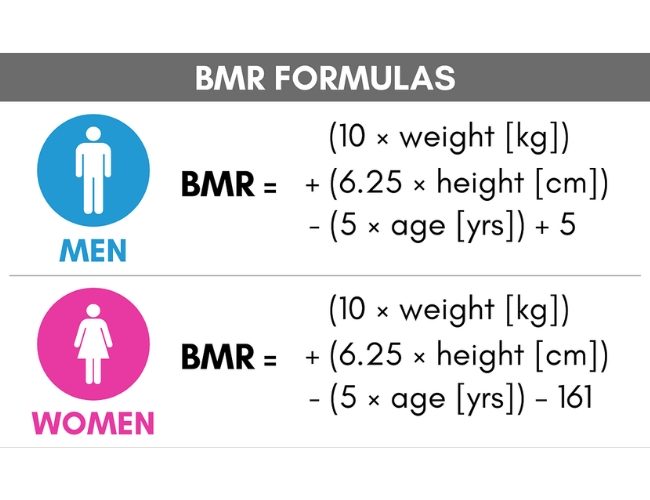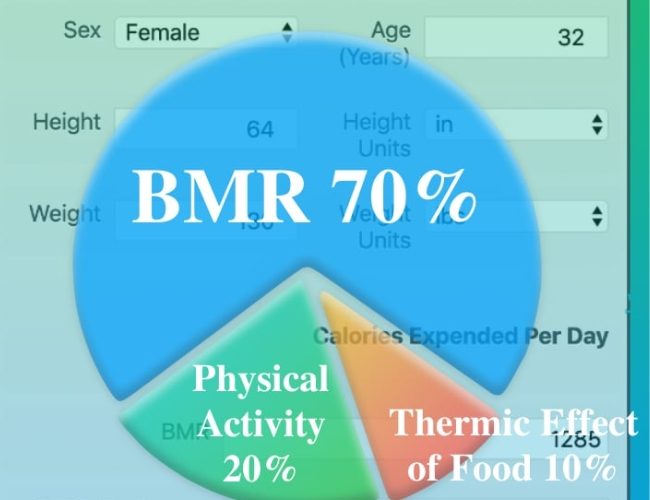Nutrition Made Simple: Mifflin-St. Jeor Equation Guide
A nutrition professional frequently relies on predictive equations to estimate an individual’s basal metabolic rate (BMR), a crucial factor in assessing daily energy requirements. Among these, the Mifflin-St. Jeor equation stands out as one of the most accurate tools for evaluating BMR in healthy adults. Acting as a nutrition guide, this equation helps practitioners make precise assessments and tailor dietary plans effectively. Whether used in a smart diet planner or as part of general nutrition assessments, it is preferred for its reliability and practicality. Read on to learn more about its role in nutrition planning and why it’s a trusted nutrition guide for professionals.
Mifflin-St. Jeor Equation

The Mifflin-St. Jeor equation is one of the widely used tools in nutrition regarding the estimation of basal metabolic rate (BMR). It calculated the amount of energy needed for the body to carry on normal physiological functions at rest. Since its discovery in 1990, the Mifflin-St. Jeor equation has become a reliable nutrition guide, especially for non-obese adults, regarding the precise understanding of dietary planning. Quite often used in a smart diet planner, it remains a basis for nutrition assessments, which enables professionals to deliver the most accurate and effective dietary strategies.
EQUATION :
For Males: BMR = 10 × weight (kg) + 6.25 × height (cm) – 5 × age (years) + 5
For Females: BMR = 10 × weight (kg) + 6.25 × height (cm) – 5 × age (years) – 161
This is a simplified formula, but still includes all the factors that are known to influence calorie needs, such as weight, height, and age. This would be helpful for nutrition specialists to calculate an approximate amount of calories by hand in practice at the point of consultation.
Why Use the Mifflin-St. Jeor Equation in Nutrition?

The Mifflin-St. Jeor equation is known to be very specific in estimating energy requirements, especially for non-obese people. Compared to other equations that exist, it’s one of the most accurate values around, and this makes it especially popular when doing nutrition evaluations. For these reasons, here’s why it’s special:
1. Accuracy for Non-Obese Adults
Amongst these BMR prediction formulas, the Mifflin-St. Jeor formula achieves with good accuracy the fact that it accurately predicts the BMR of a non-obese adult population to within an error of 10%. Such accuracy in effectiveness and efficiency as related to nutrition assessment can then facilitate reaching a client’s objectives.
2. Flexibility across Diverse Populations
Although tested earlier on a population of adults cut across ages and body types, the equation has always proven reliable with enormously diverse populations. It is therefore especially cherished as a tool in nutrition counseling for clients with varying needs for diets and energy.
3. Ease of application in counseling
Quick calculation of BMR with minimal basic metrics is priceless for the nutrition practitioner. The Mifflin-St. Jeor equation quickly helps a practitioner assess the energy requirement of an individual and helps form the personalized plan for that person.
Mifflin-St. Jeor Compared with Other Formulas in Nutrition

The other equations that are relevant in nutrition are the Harris-Benedict and Cunningham equations. Again, each equation has its own pitfalls or areas that apply. To provide some kind of illustration of why the Mifflin-St. Jeor equation is often chosen, here’s a brief comparison:
1. Harris-Benedict Equation
The Harris-Benedict equation is used many times; however, it usually overestimates the energy requirements for many individuals. In most cases for professionals working on nutrition, this results in inaccuracies, especially with non-obese clients.
2. Cunningham Equation
The Cunningham equation takes into account an individual’s fat-free mass, making it the more accurate BMR estimate in athletes and anyone with a high muscle mass. It, however, requires measurements of body composition and is thus less possible in use with regular nutrition assessments.
3. Mifflin-St. Jeor Equation
This is the most accurate for average adults, but also uniform across various populations, hence applicable for either general or specific nutrition assessments.
Applying Mifflin-St. Jeor Equation During Nutritional Counseling

Step 1: Calculate BMR
Apply the Mifflin-St. Jeor equation and replace with your client’s weight, height, and age. It is used to give an estimate of the starting point of how much a client would need in daily calories to burn to determine their calorie requirement.
Step 2: Calculation for TDEE
To estimate your client’s total daily energy needs, multiply their BMR (Basal Metabolic Rate) by an activity factor based on their activity level:
- Sedentary (little to no exercise): BMR × 1.2
- Lightly active (1–3 days of exercise per week): BMR × 1.375
- Moderately active (3–5 days of exercise per week): BMR × 1.55
- Very active (6–7 days of exercise per week): BMR × 1.725
- Super active (intense activity or 2 workouts per day): BMR × 1.9
This adjustment provides a more accurate calculation of their daily caloric requirements.
Step 3: Nutrition Plan formulation
Such choices and recommendations by the nutrition professional will be guided based on the planning that determines deficit or surplus for weight gain, loss, or maintenance and frequency of review of plan update based on client progress and comments for the best outcome.
Advantages of Mifflin-St. Jeor to Nutrition Professionals
The Mifflin-St. Jeor equation is highly valued for its versatility across nutrition practices. It provides a practical and accurate estimation of calorie needs, making it a cornerstone for dietary planning. This allows a smart diet planner to prioritize key considerations like macronutrient ratios and specific dieting goals. Additionally, as a trusted nutrition guide, it supports practitioners in delivering tailored and effective plans, enhancing outcomes in nutrition management.
Conclusion
Estimation of energy requirements forms the basis of all nutrition programs, and hence lies at the center of achieving dietary goals. Due to the whole approach being fast, practical, and very accurate, particularly for the non-obese, nutrition professionals trust the Mifflin-St. Jeor equation. The application of the equation hence improves the counselling practice where a nutrition guide can deliver individualized, evidence-based plans based on the needs of each client.
Fitrofy mainly states that the Mifflin-St. Jeor equation has worth in food assessments as it forms the basis of a smart diet planner, meaning that the meal plans have to fit certain energy and wellness-related goals. As a nutrition guide as well as an authentic source to create individual plans, this equation is the way for an expert to generate great outcomes in nutrition management. Using this equation, a smart diet planner ensures efficient as well as precise strategies for best possible results.
Prioritize health and well-being with an easy-to-use solution! The Smart Diet Planner supports daily wellness and energy. Discover the benefits of better health habits today.
Download now or reach out at dietitian@smartdietplanner.com |
+91-7037679715 | https://business.fitrofy.com/
